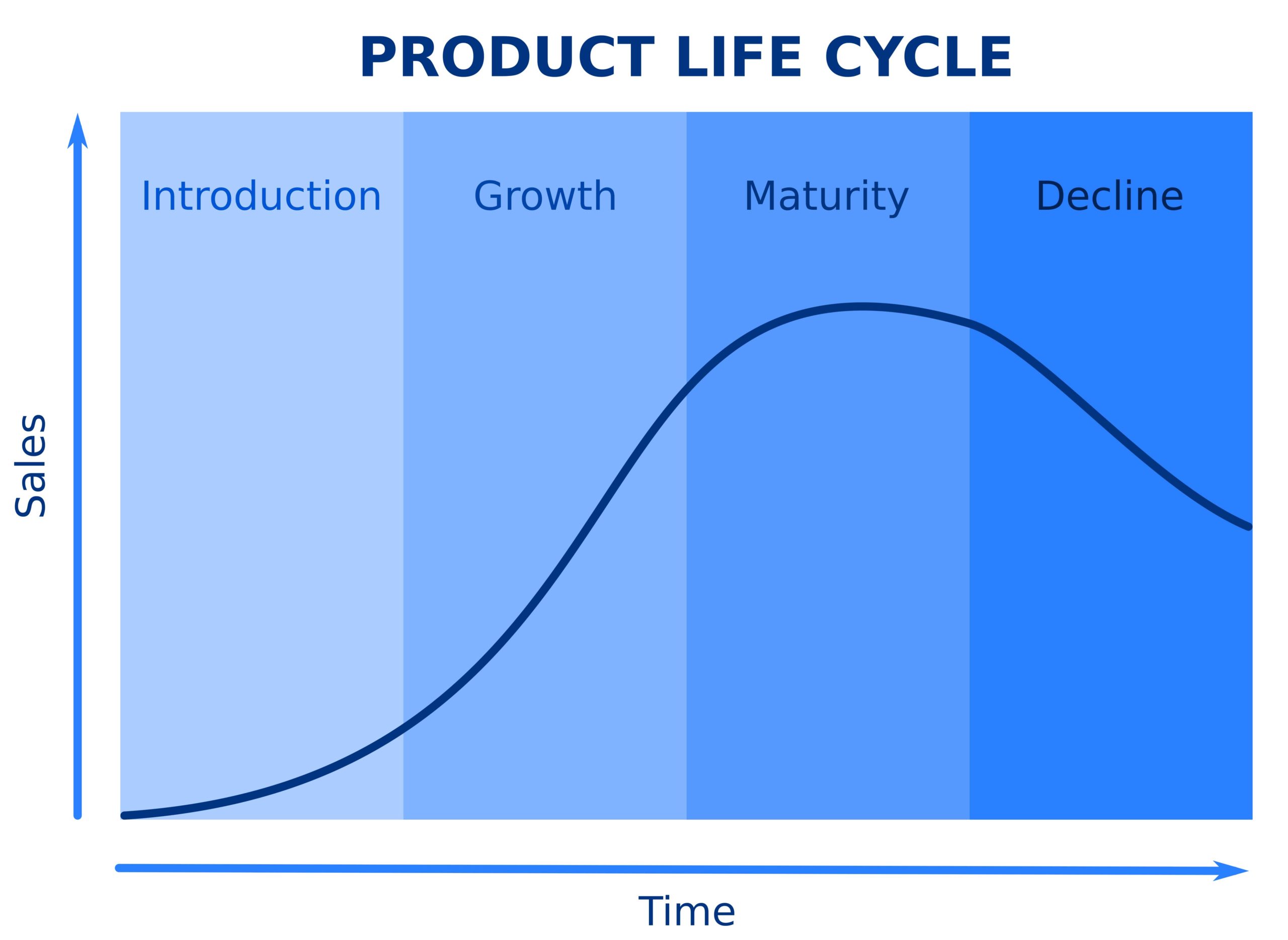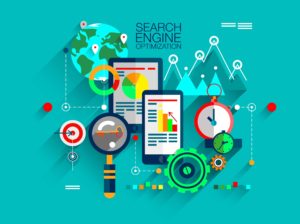
This month we at anova Digital Marketing Agency want to talk about the life stages of a product, from launch to discontinuation. This is called the “Product Life Cycle”, and it’s good to know about the general projection of the Product Life Cycle before you start developing or thinking about launching one of your own.
The Product (or Brand) Life Cycle goes through these stages
- (Development)
- Introduction
- Growth
- Maturity
- Decline
Now, not all products are going to reach each of these stages – this is a model for successful products or brands. But success is in the planning – as SmartInsights says: “the product lifecycle can be reviewed across an entire category, or in the context of an individual companies product. It is a strategic tool that helps companies plan for new product development and refine existing products.”
And as the Harvard Business Review puts it: “Time spent in attempting this kind of foresight not only helps assure that a more rational approach is brought to product planning and merchandising; also … it can help create valuable lead time for important strategic and tactical moves after the product is brought to market. Specifically, it can be a great help in developing an orderly series of competitive moves, in expanding or stretching out the life of a product, in maintaining a clean product line, and in purposely phasing out dying and costly old products.”
So let’s look at each of the Product Life Cycle stages:
Development
This stage is technically a precursor to the Product Life Cycle, but it’s crucial nonetheless. This is the stage in which a product is conceived, developed and tested before being introduced to the market. This stage requires a lot of capital investment. It is the first point when a bad idea or concept, or lack of funds could end the life cycle of a product. This is especially true if the product is new, as opposed to an alternative form of an existing product that will have to fight for a piece of the market.
Introduction
This is the first public stage of the life of a product: the introduction into the market. This stage is all about creating product awareness. Quality level, branding and intellectual property protections are established at this stage. Products at this stage may be priced very low (to be competitive) or very high (to reclaim production costs), distribution is selective (restricted to areas that have a high concentration of the target market, and promotion is, according to QuickMBA: “is aimed at innovators and early adopters. Marketing communications seek to build product awareness and educate potential consumers about the product.”
As the Harvard Business Review says: “Generally, demand has to be “created” during the product’s initial market development stage. How long this takes depends on the product’s complexity, its degree of newness, its fit into consumer needs, and the presence of competitive substitutes of one form or another. A proved cancer cure would require virtually no market development; it would get immediate massive support. An alleged superior substitute for the lost-wax process of sculpture casting would take lots longer.”
An example of a product in the introduction stage is Virtual Reality (VR) technology. Prices are high, and right now the product is mainly in the hands of early adopters and innovators.
Growth
This stage is when businesses attempt to increase market share and “build brand preference.” The quality of the product is maintained, while at the same time additional features are added. In the case of new products, pricing is also maintained while there is little competition. Distribution is expanded and product promotion is aimed at a broader audience.
This is the point, however, when competitors will jump in with similar or copy-cat products. Once again, the Harvard Business Review puts the challenges at this stage well: “The ensuing fight for the consumer’s patronage poses to the originating producer an entirely new set of problems. Instead of seeking ways of getting consumers to try the product, the originator now faces the more compelling problem of getting them to prefer his brand. This generally requires important changes in marketing strategies and methods.”
Examples of products at the growth stage are tablets and smartphones.
Maturity
Another name for the maturity stage of the Product Life Cycle could be the “market saturation stage.” At this stage, competition is fierce, and sales growth decreases. As QuickMBA puts it, “The primary objective at this point is to defend market share while maximizing profit.”
Features of the product may be changed or enhanced to differentiate it from those of competitors, pricing may be lowered, and distribution and promotion are all about emphasizing differentiation and providing incentives to consumers.
According to Small Business, “During this stage, competition for market share may be fierce. New competitors will often have trouble successfully entering the market as market potential is limited. A company will often need to differentiate the brand of products toward a specific segment. For example, the company that first entered the market may focus on being the quality leader. The company may keep prices relatively higher to maintain its premium image. The target market may include older users with a higher household income.”
An example of a product at this stage is the laptop computer. They have become a ubiquitous household item and the amount of product choice is endless.
Decline
The final stage, market decline, is when the market maturity of a product gradually declines and comes to an end, usually due to industry transformation. There are generally three choices for businesses in this situation: maintain the product (with new features or uses), discontinue the product by liquidating the remaining inventory or selling it to another business, or, as QuickMBA says: “Harvest the product – reduce costs and continue to offer it, possibly to a loyal niche segment.” An example of a product at this stage of the Product Life Cycle is the typewriter.
So, how can knowledge of the Product Life Cycle help you?
Our team here at anova Digital Marketing Agency is completely dedicated to helping you launch a successful marketing campaign for your product or brand, either online or offline. Each month we do the research to produce articles written specifically to help you understand the underlying principles of marketing. You can read our previously published business marketing articles on Porter’s Five Forces and how to set SMART goals. Next month we’ll continue that trend by focusing on “The Marketing Funnel.” In the meantime, if you have questions about marketing or want a consultation on what we can offer you in the online and social media marketing world, contact us here. Happy Halloween and see you in November!








